Deborah J. Ross's Blog, page 117
July 22, 2015
[archives] Blackberry Writing
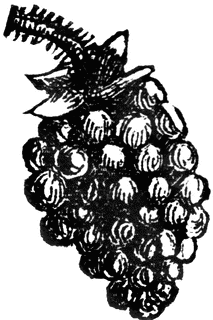 I'll be head down into revisions of Thunderlord for a while, but on my morning walk, I noticed the blackberries are ripening. So here's a post from a few years ago, Enjoy!
I'll be head down into revisions of Thunderlord for a while, but on my morning walk, I noticed the blackberries are ripening. So here's a post from a few years ago, Enjoy!It's blackberry season, and as is my custom at this time, I went out this morning to pick from the brambles along our little country road. (We have our own patch, but the berries ripen later because it's in a shadier place.) I try to do this early, when it's cool and I'm not having to squint into the sun for the higher branches. As I picked, I thought about the story I'm working on (and currently stalled on 2 scenes-that-need-more), and also writing in general.
Blackberries are tricksy things. They can look ripe from where I stand, but turn out to be all red at the base. Sometimes I can tell the moment I touch the berry -- it's too firm and too tightly attached to the stem. I have to be ready to give up on what looked like a great prospect and move on. When I'm in the flow of picking, it seems I don't even have to think about this. Isn't this like a story that seems promising but doesn't yet have the necessary depth? Occasionally -- well, more than occasionally -- my mind gets set on "this berry gets picked" and I force the issue. I'll glare at the red parts and either pop the berry into my mouth ("for private reading only"). Berries that are almost-ready go well in oatmeal. I freeze quarts and quarts of them for winter breakfasts. They're too sour on their own, but they blend well, adding pleasantly tart notes. That's not unlike taking several different story idea, none of which can stand on their own, and setting them at cross-purposes to make a much more interesting tale.
This whole business of "readiness" in a story is a curious one. It's a bit like cooking without a recipe, because while there may be guidelines, there are no hard and fast rules of how to tell when a story concept is "ripe." Over on the Book View Cafe blog, Laura Anne Gilman talks about (among other things) how unprofessional it is to argue with a rejection.
All too often at the Big NYC Publisher’s Office, after rejecting a work – especially if it was a) slush and b) got our standard slush reject letter, which was polite but clear that it wasn’t something we were interested in- we’d get a response from the submitter.
Now, professionals know that, unless you are specifically invited into an exchange, you don’t respond to a rejection. You take it, you consider what’s worth considering, and you move on. That exchange is over.
Sometimes, the response would be to ask for more details. Time-crunches didn’t allow us to do that, but it was an acceptable if frustrating response.
More often, though, we got a response along the lines of “My work is utter genius, and you’re too blinded by (fill in the blank) to see it! But you’ll be sorry!”
I think this kind of reaction isn't limited to beginning writers, but it is a particular trap. It's far easier to think that your story got rejected because of the blindness/stupidity/conspiracy/conventionalness of the gatekeepers, rather than that it simply isn't good enough. It could be a great idea and you weren't ready to do it any kind of justice. It was a trivial idea that no one could have turned into a decent story. It could have been a nifty idea but it wasn't developed, it wasn't "ripe."
I think one of the hardest things for a new writer to master is accepting that there is a threshold of quality -- for ideas, for execution -- for publication. It's so hard to hear that the story you are so proud of isn't good enough. Those thorns hurt as much when I'm pulling out as when I'm pushing in.
And here's the catch: sometimes the story is great. Sometimes the market just isn't ready for the story at this time, but it will be in the future.Somewhere there's an editor and a readership who will adore it. How can you tell?
Experienced writers usually get a sense of whether a story is a passing tone, more valuable for where it gets you than for itself, best set aside as an interesting but unsuccessful experiment, or whether it is worthy of continued confidence. I can't say no beginning writers have this maturity of perspective, but I think it extraordinarily unlikely. It comes with trial and error and constant critical attention to the work. It comes with patience, and offers more patience as the payoff.
So what is a beginning writer, or a middling writer, or any writer, to do? Here are some immediate thoughts, but everyone's solution is going to be different, and to change with time.
Get lots of support, people who share a vision of a career as being long-term, hopefully life-long. While striving to make each new project the best you can, keep perspective. Yes, there are "break-out" books, but what makes or a breaks a career is steady improvement. Most of us, on occasion, need shoulders to cry on, hands to hold, friends to celebrate with, colleagues with contagious enthusiasm for writing itself.
Beware the lure of self-publishing. It definitely has its place, but it ought not to substitute for inadequate quality by providing a way around the traditional gatekeepers. While it is remotely possible that an early work might be not right for today's larger market but perfect for a specific, smaller readership (and hence a good candidate for self publishing), it is far more likely it simply hasn't passed that threshold. Assume it hasn't. Work harder, write better, keep pushing your critical skills and your standards.
What else?

Published on July 22, 2015 10:00
July 21, 2015
Thunderlord Progress - First Draft Done!
First draft of Thunderlord is done! That's the good news. The um, challenging news is that it's 220,000 words long. Way too long, even for DAW. I have embarked upon the excision of flabby prose, tedious subplots, and extraneous characters.
Down to 208,000 and counting....
Down to 208,000 and counting....

Published on July 21, 2015 08:50
July 17, 2015
Thunderlord Progress Report

It's been a while since I've posted about my writing progress on the next Darkover novel, a sequel to Stormqueen. I'm currently fine-tuning the penultimate chapter and embarking upon what I presume will be the final one. It's turning out much better than I hoped, but perhaps that it because the "how I feel about the work in progress" swings like a pendulum from "the worst drek ever penned" to "wow, this is really good!"
I should have time to do another pass, making sure that a character who can't knit in chapter 25 isn't teaching someone else in chapter 13. Then it goes off to the MZB Literary Works Trust for approval while I am out of commission during my cataract surgery (one eye, then the other 2 weeks later).
I'm still on track for turning it in to DAW in the fall.

Published on July 17, 2015 12:10
July 16, 2015
[links] A Poodle Velociraptor and Other Cool Stuff
Lori Duron, who writes the blog Raising My Rainbow, offers 8 Books That Teach Kids About the
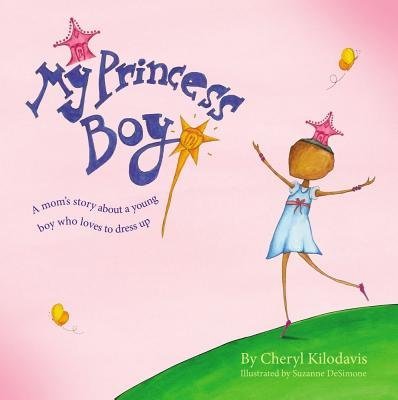 Fluidity of Gender and the Importance of Acceptance. She says:
Fluidity of Gender and the Importance of Acceptance. She says:
An ancestor of Velociraptor had feathers, and most likely so did the Jurassic World terror.

Images of Pluto from New Horizons are in the news, but we're continuing to discover new things about Mars, including that its crust may contain silica-rich rock typical of continents.

Mostly, I try to keep this blog a politics-free zone (with a few exceptions that touch on my personally, like the death penalty). But occasionally a bit of news tickles my fancy so much, I need to share it:

 Fluidity of Gender and the Importance of Acceptance. She says:
Fluidity of Gender and the Importance of Acceptance. She says:My husband and I have been committed to showing our son positive examples of differently gendered people in literature. We’ve read the following books countless times and always encourage an open dialogue about what it means to be a boy, a girl, a human. More importantly, we use these books to teach about love, acceptance, equality, empathy, and the beauty of diversity. Read these books to your child to help them better understand their gender identity and be a better friend to the boy who has long hair and wears a skirt or the girl with the short spiked hair who only wears pants.
An ancestor of Velociraptor had feathers, and most likely so did the Jurassic World terror.

Velociraptor would have been a feisty little feathered poodle from hell, not a drab scaly reptilian monster like in the Jurassic Park films,” added Brusatte, who is a paleontologist at the University of Edinburgh’s School of GeoSciences. He co-authored the study, published in the journal Scientific Reports, with paleontologist Junchang Lüof of the Chinese Academy of Geological Sciences. The scientists came to their conclusions after studying the near-complete and exceptionally well-preserved skeleton for Z. suni, which lived around 125 million years ago in what is now the Liaoning Province of northeastern China. Like Velociraptor, it was adromaeosaurid -- fast-running, feathered, sickled-clawed dinosaurs that were close relatives of birds. Z. suni weighed around 25 pounds and, most strikingly, had short, 14-inch-long arms covered with long feathers that looked like quill pens. Today’s eagles and vultures sport a similar type of feather.
Images of Pluto from New Horizons are in the news, but we're continuing to discover new things about Mars, including that its crust may contain silica-rich rock typical of continents.

With the help of a rock-zapping laser, NASA's Mars rover Curiosity has detected Red Planet rocks similar to Earth's oldest continental crust, researchers say.
This discoverysuggests that ancient Mars may have been more similar to ancient Earth than previously thought, scientists added.
Mostly, I try to keep this blog a politics-free zone (with a few exceptions that touch on my personally, like the death penalty). But occasionally a bit of news tickles my fancy so much, I need to share it:
The Board of Supervisors in Santa Cruz County, California, have taken a bold step. The County has decided that they will not do business, including investment services or bond issuances, with five major banks that the Justice Department found to be associated with felonious acts in May of this year.

Published on July 16, 2015 09:44
July 13, 2015
Various Thoughtful Posts for July
Meet the Wendiceratops, named for discoverer Wendy Sloboda:

BookEnds on "The Death of the Midlist." Ever since I can remember, writers have been lamenting 'the death of the midlist.' Midlist is just that, neither best sellers nor abysmal failures. If that sounds blah, remember that this is where some of the finest writing falls. Writing that isn't mass appeal mind candy but is solid enough to generate a modest but loyal following.

From Astronomy Picture of the Day, gorgeous clouds in Rho Ophiuchi


Unlike any other dinosaur, this creature’s skull is ringed with bone protrusions that curl inward toward the animal’s nose like gnarly crochet hooks. “They remind me a little bit of a weird sea anemone or something,” said Ryan, the curator of vertebrate paleontology at the Cleveland Museum of Natural History.
The dinosaur also has a medium-sized horn over its nose. The researchers suspect that it had horns over its eyes as well because its relatives, like Triceratops, boast prominent eye horns. The researchers hypothesize that the dinosaur’s lavish array of horns may have helped it attract mates, “just like modern birds, which have all these ornate plumages and long feathers and short feathers,” Ryan said. Another possibility is that the horns allowed males to demonstrate their strength and fitness to the opposite sex, just as big-horned sheep butt heads to determine who will get to breed with the female.
BookEnds on "The Death of the Midlist." Ever since I can remember, writers have been lamenting 'the death of the midlist.' Midlist is just that, neither best sellers nor abysmal failures. If that sounds blah, remember that this is where some of the finest writing falls. Writing that isn't mass appeal mind candy but is solid enough to generate a modest but loyal following.
Here's the truth as I see it where the midlist is concerned. Authors who languish in the midlist are not going to be given contract after contract just to remain midlist authors. That's not what the midlist is about (at least not these days). The midlist is a place for publishers to grow authors from. Its where great books go to grow. A publisher will always have a midlist of some sort because a publisher will always be buying new books from new authors and somewhere along the way someone is going to have numbers that aren't top selling numbers, but aren't at the bottom either. When those authors come along the publisher is going to look at those numbers to see which direction they are going and what can be done to boost that author, those books and those numbers into the top selling range.
When rumors abound that a publisher is cutting the midlist it isn't mean that a publisher is taking out one kind of book over another, it means the publisher is making room for more. Have I ever told you that I'm an eternal optimist?

From Astronomy Picture of the Day, gorgeous clouds in Rho Ophiuchi
Fine dust illuminated from the front by starlight produces blue reflection nebulae. Gaseous clouds whose atoms are excited by ultraviolet starlight produce reddish emission nebulae. Backlit dust clouds block starlight and so appear dark. Antares, a red supergiant and one of the brighter stars in the night sky, lights up the yellow-red clouds on the lower center of the featured image.

Published on July 13, 2015 01:00
July 10, 2015
The Price of Silence audiobook!
 My novelette, "The Price of Silence," (F & SF 2009, Honorable Mention, Year's Best SF) is now available as an audiobook. You can listen to the first 5 minutes or so, most of the opening scene, free.
My novelette, "The Price of Silence," (F & SF 2009, Honorable Mention, Year's Best SF) is now available as an audiobook. You can listen to the first 5 minutes or so, most of the opening scene, free.If text is your thing, the story is available from Book View Cafe. Amazon, and Barnes & Noble.

Published on July 10, 2015 01:00
I can haz author happy smile now?
Barb Caffrey of Shiny Book Reviews had glowing praise for The Seven-Petaled Shield.
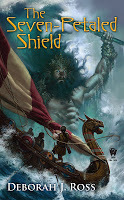
THE SEVEN-PETALED SHIELD is spiritually deep in a way I rarely see in fantasy. Ms. Ross did an outstanding job in rendering a strong and quiet woman who takes comfort in books, and shows just how relevant such a heroine can be. (I could live without Zevaron, quite frankly, but I know he’s needed for the sequels.)
Buy it at Amazon, Barnes & Noble, Powells, or your local bookseller.

THE SEVEN-PETALED SHIELD is spiritually deep in a way I rarely see in fantasy. Ms. Ross did an outstanding job in rendering a strong and quiet woman who takes comfort in books, and shows just how relevant such a heroine can be. (I could live without Zevaron, quite frankly, but I know he’s needed for the sequels.)
Bottom line? THE SEVEN-PETALED SHIELD is an exceptional epic fantasy, one that’s deep and broad in ways that I’ve rarely seen. More epic fantasy should be like this. Highly recommended!
Buy it at Amazon, Barnes & Noble, Powells, or your local bookseller.

Published on July 10, 2015 01:00
July 9, 2015
The Tajji Diaries: Patience and Progress
 Eye contactOne of life’s aggravations is that all too often things happen in their own time and not when I think they should. Writing progress, weight loss, getting from hither to yon on the freeway, you name it.
Eye contactOne of life’s aggravations is that all too often things happen in their own time and not when I think they should. Writing progress, weight loss, getting from hither to yon on the freeway, you name it.Dog training definitely fits in this category. Sometimes they “get it” right away; you can see the lights go on in their eyes. Then they’re delighted that things make sense. It must be frustrating to them to not understand what we are asking them to do and why we are unhappy with them. I think that’s why positive (reward-based) training works so well, because it provides a way for us to tell the dog that he did what we wanted. Anything besides the desired behavior -> no cookie, try again. Desired behavior -> cookie! Happy dog -> let’s do it again! We’ve paired something we want the dog to do with something wonderful. Complex behaviors can be broken down into component parts and chained, with lots repetition so they become one flowing behavior.
Behaviors that are naturally part of the dog’s repertoire are easier to train, especially if the dog offers them just by being a dog. This requires patience and precise timing of the reward. Since it’s highly unlikely we’ll be able to offer a treat within a second of the desired behavior, we use a marker, like a clicker or “Yes!” that the dog has come to associate with the reward. Then we have to set up a training environment in which the dog has the choice to offer the behavior we want, or something close to it that can be then shaped. For example, if we are training “Down,” instead of luring the dog with a treat, we bring the dog into an enclosed space (so there are some limitations on what the dog can do) and wait. And wait. And wait. Until the dog lies down, which is then rewarded. Rinse and repeat. Usually, the dog will soon begin lying down many times in rapid succession. Then we add the cue word. It may take longer for the initial connection, but once that’s made, the dogs joyfully perform the behavior. It’s fun to watch dogs that have been trained this way. At the beginning of a new session, they run through all the behaviors they’ve ever been rewarded for, watching carefully for the trainer’s response. Often they’ve learned how to try new things, the doggie version of being creative.
 If we lure or place the dog into position, we get the desired behavior right away, without having to stand there as neutrally as we can while the dog tries this and that. However, the connection between the behavior, say the Down, and the reward is not as clear for the dog. He thinks, Am I being rewarded for sniffing the treat? For extending my head? For having the trainer’s hand on my back? Or for lying down?
If we lure or place the dog into position, we get the desired behavior right away, without having to stand there as neutrally as we can while the dog tries this and that. However, the connection between the behavior, say the Down, and the reward is not as clear for the dog. He thinks, Am I being rewarded for sniffing the treat? For extending my head? For having the trainer’s hand on my back? Or for lying down?All this has to do with connections we want the dog to make: “Down” cue + Down behavior -> Yes! + cookie. What if we want to break a connection the dog has already made?
In the case of Tajji, our retired seeing eye dog, she had become traumatized during her work, especially to the presence of other dogs. Small dogs elicited the most reactivity in her. We began desensitizing her as soon as she came to live with us, nearly a year and a half ago. We had to teach her the marker (we use “Yes!” because it leaves hands free), eye contact, and relaxation/focus exercises that help her to “get her brain back into gear” when she’s overloaded. We worked with a trainer, Sandi Pensinger of Living With Dogs, whose “Reactive Rover” classes gave Tajji safe exposures to other dogs. Over the course of the class and practice sessions, Tajji made slow improvement. Most of what happened was us learning how to read her (very subtle) signals of distress and to train ourselves in appropriate responses.
Tajji had learned that other dogs meant bad things, especially bad-scary things because she was in working harness and was not permitted to respond appropriately to aggressive behavior. In addition, she worked for 3 years with a fractured tooth, so she was in pain. Little dogs became firmly associated with pain, being vulnerable, and doubtless her owner being angry with her. We had our work cut out for use to undo that association and teach her that she was safe with us.
Our first goal was for her to be able to look at another dog at a distance, without barking or lunging. We had lots of practice in Sandi’s class, in a controlled environment, a soccer field where the other dog could be waaaay far and with visual blinds. We didn’t do many neighborhood walks because there are lots of dogs, both being walked and behind fences, and many places where it isn’t easy to “Get Out of Dodge.” We did find a place to go hiking with her, a private property where we had permission to do so with her on leash.
Eventually, the practice sessions ended. Tajji had had a number of successes, meaning looking at a small dog at decreasing distances. We began to think, though, that especially since she is elderly and doesn’t need a lot of exercise, we might confine her to the yard (1/3 acre, fenced) and our hiking place. But as time went on, we decided to try neighborhood walks again, choosing early morning hours. Some of these outings were uneventful, and that gave us hope.
Tajji clearly loves the opportunity to smell lots of new things, something she never did while working. She used to have a game of “refusing the harness” – we use a soft front-clip harness – romping and evading us for some time before allowing us to put it on her. These romps got shorter and shorter, until she would see the harness and run to the back door, tail wagging. This happened even after walks when we had “near encounters” with other dogs. All this time, we kept practicing the desensitization and relaxation skills.
A couple of things happened, including seeing a dog at the end of the block and turning briskly around or seeing a miniature horse being walked or encountering joggers. One was that a small dog near the corner got loose and rushed at Tajji. Dave, who was walking her, dropped her leash because being restrained makes any dog much more reactive. The dog raced up to Tajji, barking furiously, they tussled, she rolled the dog on its back, the dog ran away, and she came back to Dave, looking immensely pleased with herself. This incident – in which she was able to handle the stressful situation, and with excellent bite inhibition – seemed to give her more confidence.
Another thing was a series of calm visual encounters at long distances in which Tajji looked where we pointed (“Look at that!”) while being treated. Or a dog in a yard would rush the fence, barking, Tajji would react, we would “Get Out of Dodge” and then calm down. The distance we’d have to run got shorter, so that Tajji would be doing her focus exercises, eyes on me, while the other dog was still barking. Finally, we’ve had several occasions of being able to look calmly at a small dog, then look to me or Dave for a reward. In other words, we have been able to replace one response with another, desired one. The new scheme is Scary Dog -> look at Mom –> “Yes!” + treat.
This progress – and it is progress, not perfection – took time. Lots and lots of time. Lots and lots of repetitions. In fact, way longer and way more than seemed at all reasonable. We were ready to give up and just keep her beside us, where she prefers to be. But in her slow doggie fashion. Tajji was unlearning and relearning. Just the way dogs work better with occasional rewards, we humans need a hint now and again that our efforts are paying off. Now that we’ve had some evidence, we’re motivated to keep practicing.

Published on July 09, 2015 01:00
July 6, 2015
Summer Illness, Reading Joy
My summer began in a rather inauspicious manner with a round of bronchitis that lasted the better part of 3 weeks. Long story, the highlights of which are a history of previous episodes, the discovery that I am highly allergic to marijuana smoke, which lead to an asthma attack, which promptly turned into bronchitis, and Deborah in her inimitable fashion had not one but two relapses. Only one of which was my fault for doing too much too soon. (I am now the proud possessor of the relevant inhalers.)
Enough whinging (British friends: is that the right word?) One of the very, very few upsides of this illness was that I had to stay in bed. A lot. After the initial phase of sleeping all day, I started reaching for my pile of To Be Read books. Ah, books! How would we get through bed rest without them? Here is a sampling of the stories that helped me through the tedium:
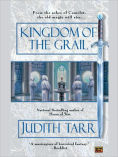 Judith Tarr: Kingdom of the Grail. I’d picked this up at Powell’s Books, that amazing bookstore in Portland OR (see below), and then got distracted by other things. It’s historical fantasy, with the emphasis on a wonderful blending of fantastical elements. We all know the story of King Arthur and the Holy Grail, right? Tarr sets her story not in King Arthur’s time but that of Charlemagne, with one of the King’s Companions, Roland, as the hero. Add much Grail-centered magical subterfuge, an ancient evil bent on acquiring the Grail, and a sorceress who transcends time and culture. Oh, and a love story. Of course. Oh, and some very nifty horses.
Judith Tarr: Kingdom of the Grail. I’d picked this up at Powell’s Books, that amazing bookstore in Portland OR (see below), and then got distracted by other things. It’s historical fantasy, with the emphasis on a wonderful blending of fantastical elements. We all know the story of King Arthur and the Holy Grail, right? Tarr sets her story not in King Arthur’s time but that of Charlemagne, with one of the King’s Companions, Roland, as the hero. Add much Grail-centered magical subterfuge, an ancient evil bent on acquiring the Grail, and a sorceress who transcends time and culture. Oh, and a love story. Of course. Oh, and some very nifty horses.
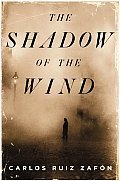 Carlos Ruiz Zafón: The Shadow of the Wind. This gem was on my husband’sTBR shelf, and I almost didn’t pick it up because of the mainstream-looking cover. Imagine my delight when the story opens with a visit to “The Cemetery of Forgotten Books,” where you get to choose one book, just one book from the thousands of musty volumes, that you promise to keep alive, to make sure it never disappears. For the narrator, that book is The Shadow of the Wind, by Julián Carax, and from the very first paragraph, his life is never the same. Especially when a mysterious figure appears, bent on destroying every copy of every book Carax wrote, all of which were dismal publishing failures so they’re rare collector’s prizes anyway, not to mention addictive. After a while, the story devolves into part mystery, part suspense thriller, but that opening, which spoke so eloquently about the magical power of books, had me hooked. It’s not exactly fantasy/science fiction, but it’s definitely one for us book-loving fanatics.
Carlos Ruiz Zafón: The Shadow of the Wind. This gem was on my husband’sTBR shelf, and I almost didn’t pick it up because of the mainstream-looking cover. Imagine my delight when the story opens with a visit to “The Cemetery of Forgotten Books,” where you get to choose one book, just one book from the thousands of musty volumes, that you promise to keep alive, to make sure it never disappears. For the narrator, that book is The Shadow of the Wind, by Julián Carax, and from the very first paragraph, his life is never the same. Especially when a mysterious figure appears, bent on destroying every copy of every book Carax wrote, all of which were dismal publishing failures so they’re rare collector’s prizes anyway, not to mention addictive. After a while, the story devolves into part mystery, part suspense thriller, but that opening, which spoke so eloquently about the magical power of books, had me hooked. It’s not exactly fantasy/science fiction, but it’s definitely one for us book-loving fanatics.
Jo Walton: My Real Children. An elderly woman who lives in a nursing home suffers from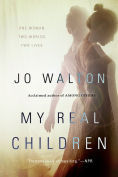 confusion. Does she have four children…or two plus a beloved stepchild? Is the door to the right or the left? Is this dementia…or something else? Once her life was one stream of events, until a single decision changed everything. This sounds like your usual parallel-universe story, but the focus is on the intimate, everyday lives and relationships of the women she becomes, executed with such nuanced sensitivity that when you’re inside the story, it feels like it’s real history. For all its domesticity, the book moves right along. I loved every page of it.
confusion. Does she have four children…or two plus a beloved stepchild? Is the door to the right or the left? Is this dementia…or something else? Once her life was one stream of events, until a single decision changed everything. This sounds like your usual parallel-universe story, but the focus is on the intimate, everyday lives and relationships of the women she becomes, executed with such nuanced sensitivity that when you’re inside the story, it feels like it’s real history. For all its domesticity, the book moves right along. I loved every page of it.
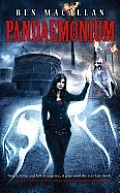 Ben Macallan (Chaz Brenchley): Pandaemonium. I find Brenchley’s prose dense and chewy, to be savored like fine chocolate, so this sequel to Desdaemona sat on my shelf for an unconscionable length of time. Desi hits the ground running, with little thought to us mere mortals who may not have kept track of all her boyfriends, not to mention their families who are, of course, out for her blood. This is Desi, so if you haven’t read the first book, run out and get it. Sexy, uncompromising urban fantasy, complete with the Platonic ideal of a horse, who lifts itself from the English countryside to give our heroine a lift. She says, “I guess you do know when you’re being tailed by one of the monuments of prehistoric England. Sight unseen, you still know it. Presence isn’t only about interrupted light and atmospheric pressure-waves. Horse can eclipse the world and hush the stars in their courses.” Horses again. Deborah likes horses, she does.
Ben Macallan (Chaz Brenchley): Pandaemonium. I find Brenchley’s prose dense and chewy, to be savored like fine chocolate, so this sequel to Desdaemona sat on my shelf for an unconscionable length of time. Desi hits the ground running, with little thought to us mere mortals who may not have kept track of all her boyfriends, not to mention their families who are, of course, out for her blood. This is Desi, so if you haven’t read the first book, run out and get it. Sexy, uncompromising urban fantasy, complete with the Platonic ideal of a horse, who lifts itself from the English countryside to give our heroine a lift. She says, “I guess you do know when you’re being tailed by one of the monuments of prehistoric England. Sight unseen, you still know it. Presence isn’t only about interrupted light and atmospheric pressure-waves. Horse can eclipse the world and hush the stars in their courses.” Horses again. Deborah likes horses, she does.
M. J. Locke: Up Against It. I think this book came to me from a freebie bag at the Nebula Award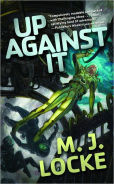 Weekend, and I haven’t been in the mood for much space-type science fiction. I also had no idea that M. J. Locke was the amazing and wonderful Laura J. Mixon-Gould. The more fool me for not having jumped on it. Suspense/thriller, mystery, neato cultural stuff, a gang of buddies who are astonishingly capable for teenagers, interplanetary gangsters making a serious power grab, not to mention some way kickass women characters and a few men who aren’t that bad, either, all on an asteroid mining colony. I love it when science fiction is chock full of nifty ideas but has strong characters and an even stronger moral compass. This one fits the bill.
Weekend, and I haven’t been in the mood for much space-type science fiction. I also had no idea that M. J. Locke was the amazing and wonderful Laura J. Mixon-Gould. The more fool me for not having jumped on it. Suspense/thriller, mystery, neato cultural stuff, a gang of buddies who are astonishingly capable for teenagers, interplanetary gangsters making a serious power grab, not to mention some way kickass women characters and a few men who aren’t that bad, either, all on an asteroid mining colony. I love it when science fiction is chock full of nifty ideas but has strong characters and an even stronger moral compass. This one fits the bill.
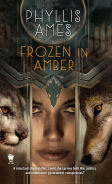 Phyllis Ames: Frozen in Amber. This doesn’t quite qualify as (a) I was almost well; (b) I read it in ARC (Advance Reading Copy) so as I write this, it hasn’t been released yet. But I loved it and here’s why. Werecritters, specifically: cougars, wolves and, oh gosh, eagles, in one of the best worked out werecritter world-building I’ve read, complete with secret liaisons with intelligence agencies, born versus bitten differences, family versus pack loyalties, and more than an occasional touch of romance in between the action. It takes place in Portland, one of my favorite cities (see above). And our WerCougar heroine is a high-powered attorney, which in itself is neither here nor there, could be just interesting background although in this case it’s vital to the plot, but she is terrifyingly competent -- smart and self-confident, not to mention sexy and a bit angsty, yet not at all about to take second fiddle to anyone who violates her territory. The best paranormal urban fantasy I’ve read in a long time. Look for it!
Phyllis Ames: Frozen in Amber. This doesn’t quite qualify as (a) I was almost well; (b) I read it in ARC (Advance Reading Copy) so as I write this, it hasn’t been released yet. But I loved it and here’s why. Werecritters, specifically: cougars, wolves and, oh gosh, eagles, in one of the best worked out werecritter world-building I’ve read, complete with secret liaisons with intelligence agencies, born versus bitten differences, family versus pack loyalties, and more than an occasional touch of romance in between the action. It takes place in Portland, one of my favorite cities (see above). And our WerCougar heroine is a high-powered attorney, which in itself is neither here nor there, could be just interesting background although in this case it’s vital to the plot, but she is terrifyingly competent -- smart and self-confident, not to mention sexy and a bit angsty, yet not at all about to take second fiddle to anyone who violates her territory. The best paranormal urban fantasy I’ve read in a long time. Look for it!
Enough whinging (British friends: is that the right word?) One of the very, very few upsides of this illness was that I had to stay in bed. A lot. After the initial phase of sleeping all day, I started reaching for my pile of To Be Read books. Ah, books! How would we get through bed rest without them? Here is a sampling of the stories that helped me through the tedium:
 Judith Tarr: Kingdom of the Grail. I’d picked this up at Powell’s Books, that amazing bookstore in Portland OR (see below), and then got distracted by other things. It’s historical fantasy, with the emphasis on a wonderful blending of fantastical elements. We all know the story of King Arthur and the Holy Grail, right? Tarr sets her story not in King Arthur’s time but that of Charlemagne, with one of the King’s Companions, Roland, as the hero. Add much Grail-centered magical subterfuge, an ancient evil bent on acquiring the Grail, and a sorceress who transcends time and culture. Oh, and a love story. Of course. Oh, and some very nifty horses.
Judith Tarr: Kingdom of the Grail. I’d picked this up at Powell’s Books, that amazing bookstore in Portland OR (see below), and then got distracted by other things. It’s historical fantasy, with the emphasis on a wonderful blending of fantastical elements. We all know the story of King Arthur and the Holy Grail, right? Tarr sets her story not in King Arthur’s time but that of Charlemagne, with one of the King’s Companions, Roland, as the hero. Add much Grail-centered magical subterfuge, an ancient evil bent on acquiring the Grail, and a sorceress who transcends time and culture. Oh, and a love story. Of course. Oh, and some very nifty horses. Carlos Ruiz Zafón: The Shadow of the Wind. This gem was on my husband’sTBR shelf, and I almost didn’t pick it up because of the mainstream-looking cover. Imagine my delight when the story opens with a visit to “The Cemetery of Forgotten Books,” where you get to choose one book, just one book from the thousands of musty volumes, that you promise to keep alive, to make sure it never disappears. For the narrator, that book is The Shadow of the Wind, by Julián Carax, and from the very first paragraph, his life is never the same. Especially when a mysterious figure appears, bent on destroying every copy of every book Carax wrote, all of which were dismal publishing failures so they’re rare collector’s prizes anyway, not to mention addictive. After a while, the story devolves into part mystery, part suspense thriller, but that opening, which spoke so eloquently about the magical power of books, had me hooked. It’s not exactly fantasy/science fiction, but it’s definitely one for us book-loving fanatics.
Carlos Ruiz Zafón: The Shadow of the Wind. This gem was on my husband’sTBR shelf, and I almost didn’t pick it up because of the mainstream-looking cover. Imagine my delight when the story opens with a visit to “The Cemetery of Forgotten Books,” where you get to choose one book, just one book from the thousands of musty volumes, that you promise to keep alive, to make sure it never disappears. For the narrator, that book is The Shadow of the Wind, by Julián Carax, and from the very first paragraph, his life is never the same. Especially when a mysterious figure appears, bent on destroying every copy of every book Carax wrote, all of which were dismal publishing failures so they’re rare collector’s prizes anyway, not to mention addictive. After a while, the story devolves into part mystery, part suspense thriller, but that opening, which spoke so eloquently about the magical power of books, had me hooked. It’s not exactly fantasy/science fiction, but it’s definitely one for us book-loving fanatics.Jo Walton: My Real Children. An elderly woman who lives in a nursing home suffers from
 confusion. Does she have four children…or two plus a beloved stepchild? Is the door to the right or the left? Is this dementia…or something else? Once her life was one stream of events, until a single decision changed everything. This sounds like your usual parallel-universe story, but the focus is on the intimate, everyday lives and relationships of the women she becomes, executed with such nuanced sensitivity that when you’re inside the story, it feels like it’s real history. For all its domesticity, the book moves right along. I loved every page of it.
confusion. Does she have four children…or two plus a beloved stepchild? Is the door to the right or the left? Is this dementia…or something else? Once her life was one stream of events, until a single decision changed everything. This sounds like your usual parallel-universe story, but the focus is on the intimate, everyday lives and relationships of the women she becomes, executed with such nuanced sensitivity that when you’re inside the story, it feels like it’s real history. For all its domesticity, the book moves right along. I loved every page of it. Ben Macallan (Chaz Brenchley): Pandaemonium. I find Brenchley’s prose dense and chewy, to be savored like fine chocolate, so this sequel to Desdaemona sat on my shelf for an unconscionable length of time. Desi hits the ground running, with little thought to us mere mortals who may not have kept track of all her boyfriends, not to mention their families who are, of course, out for her blood. This is Desi, so if you haven’t read the first book, run out and get it. Sexy, uncompromising urban fantasy, complete with the Platonic ideal of a horse, who lifts itself from the English countryside to give our heroine a lift. She says, “I guess you do know when you’re being tailed by one of the monuments of prehistoric England. Sight unseen, you still know it. Presence isn’t only about interrupted light and atmospheric pressure-waves. Horse can eclipse the world and hush the stars in their courses.” Horses again. Deborah likes horses, she does.
Ben Macallan (Chaz Brenchley): Pandaemonium. I find Brenchley’s prose dense and chewy, to be savored like fine chocolate, so this sequel to Desdaemona sat on my shelf for an unconscionable length of time. Desi hits the ground running, with little thought to us mere mortals who may not have kept track of all her boyfriends, not to mention their families who are, of course, out for her blood. This is Desi, so if you haven’t read the first book, run out and get it. Sexy, uncompromising urban fantasy, complete with the Platonic ideal of a horse, who lifts itself from the English countryside to give our heroine a lift. She says, “I guess you do know when you’re being tailed by one of the monuments of prehistoric England. Sight unseen, you still know it. Presence isn’t only about interrupted light and atmospheric pressure-waves. Horse can eclipse the world and hush the stars in their courses.” Horses again. Deborah likes horses, she does.M. J. Locke: Up Against It. I think this book came to me from a freebie bag at the Nebula Award
 Weekend, and I haven’t been in the mood for much space-type science fiction. I also had no idea that M. J. Locke was the amazing and wonderful Laura J. Mixon-Gould. The more fool me for not having jumped on it. Suspense/thriller, mystery, neato cultural stuff, a gang of buddies who are astonishingly capable for teenagers, interplanetary gangsters making a serious power grab, not to mention some way kickass women characters and a few men who aren’t that bad, either, all on an asteroid mining colony. I love it when science fiction is chock full of nifty ideas but has strong characters and an even stronger moral compass. This one fits the bill.
Weekend, and I haven’t been in the mood for much space-type science fiction. I also had no idea that M. J. Locke was the amazing and wonderful Laura J. Mixon-Gould. The more fool me for not having jumped on it. Suspense/thriller, mystery, neato cultural stuff, a gang of buddies who are astonishingly capable for teenagers, interplanetary gangsters making a serious power grab, not to mention some way kickass women characters and a few men who aren’t that bad, either, all on an asteroid mining colony. I love it when science fiction is chock full of nifty ideas but has strong characters and an even stronger moral compass. This one fits the bill. Phyllis Ames: Frozen in Amber. This doesn’t quite qualify as (a) I was almost well; (b) I read it in ARC (Advance Reading Copy) so as I write this, it hasn’t been released yet. But I loved it and here’s why. Werecritters, specifically: cougars, wolves and, oh gosh, eagles, in one of the best worked out werecritter world-building I’ve read, complete with secret liaisons with intelligence agencies, born versus bitten differences, family versus pack loyalties, and more than an occasional touch of romance in between the action. It takes place in Portland, one of my favorite cities (see above). And our WerCougar heroine is a high-powered attorney, which in itself is neither here nor there, could be just interesting background although in this case it’s vital to the plot, but she is terrifyingly competent -- smart and self-confident, not to mention sexy and a bit angsty, yet not at all about to take second fiddle to anyone who violates her territory. The best paranormal urban fantasy I’ve read in a long time. Look for it!
Phyllis Ames: Frozen in Amber. This doesn’t quite qualify as (a) I was almost well; (b) I read it in ARC (Advance Reading Copy) so as I write this, it hasn’t been released yet. But I loved it and here’s why. Werecritters, specifically: cougars, wolves and, oh gosh, eagles, in one of the best worked out werecritter world-building I’ve read, complete with secret liaisons with intelligence agencies, born versus bitten differences, family versus pack loyalties, and more than an occasional touch of romance in between the action. It takes place in Portland, one of my favorite cities (see above). And our WerCougar heroine is a high-powered attorney, which in itself is neither here nor there, could be just interesting background although in this case it’s vital to the plot, but she is terrifyingly competent -- smart and self-confident, not to mention sexy and a bit angsty, yet not at all about to take second fiddle to anyone who violates her territory. The best paranormal urban fantasy I’ve read in a long time. Look for it!
Published on July 06, 2015 01:00
July 1, 2015
Gifts of Darkover: Behind the Stories
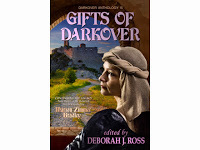 Writers find inspiration in many places: an image, a line of dialog, a character, a question, or the burning desire to know more. Here, in a fascinating peek into the imaginations of talented writers, some of the contributors to Gifts of Darkovershare the origins of their stories. (This material appeared previously in individual interviews.) Available in trade paperback and ebook editions at Amazon, Barnes & Noble and other venues.
Writers find inspiration in many places: an image, a line of dialog, a character, a question, or the burning desire to know more. Here, in a fascinating peek into the imaginations of talented writers, some of the contributors to Gifts of Darkovershare the origins of their stories. (This material appeared previously in individual interviews.) Available in trade paperback and ebook editions at Amazon, Barnes & Noble and other venues.Jane Bigelow (“Healing Pain”): What happens when someone wants the best of both worlds, not just for themselves, but for their people? Taniquel’s father might have lived if the people around him had been able to combine Terran and Darkovan medical knowledge instead of each fearing and discounting the other’s resources. Taniquel also must deal with a question that transcends cultures: How do you rebel effectively against people who genuinely, but mistakenly, believe that they have your best interests at heart? People whom you respect, like, and even love?
Barb Caffrey (“A Problem of Punishment”): How did Fiona's parents meet? What was her father Dominic, who I already knew had been a judge before her, really like? And what had made Gorsali fall in love with him, and he with her? A romantic story of a smart man and an accomplished woman against the background of the Hellers appealed to me, especially since they fell in love prior to the Terranan returning to Darkover and didn't have many role models that would've helped them out. Now, as to why I felt Dominic, a judge, could fall in love with a Renunciate? Dominic has seen it all in his courtroom, and knows how to size up people quickly. Because of that, he has fewer prejudices in certain respects than others, and he has far more respect for the charter of the Renunciates than do most other men because he has far more respect for the legal system. Because of that, I felt he could see her as an equal partner in time...and that way, love could potentially grow (or at least a strong attraction).
Margaret L. Carter (“Hidden Gifts”): The guidelines for Darkover stories often mention “unusual use of laran.” I wanted to do something with one of the most unusual laran phenomena, teleportation, which (I think) is shown in the novels only in the context of matrix work. What experience might make a person unaware of the extent of her power desperate enough to perform such an act on her own? For a protagonist, I chose one of my favorite character types, the “Ugly Duckling” who discovers her “swan” traits only when pushed to her limits. In a way, this story echoes my first Darkover tale, “Her Own Blood” (in Free Amazons Of Darkover), which also features a nedestraheroine discovering her laran.
Rosemary Edghill ("Learning To Breathe Snow," written with frequent collaborator Rebecca Fox): This was our second story written with the background we came up with for "Second Contact". Following canon, the Terrans have moved the Terran Legation from Caer Donn to Thendara, and the culture-clash continues. One of the fun things for us as writers is that Marion Zimmer Bradley's canon isn't consistent. In the stories she wrote first, it's the Terran Empire. Later, she calls it the Terran Federation. So of course we wondered: what if both names are true? Does the Empire transition to a Federation during the period of Recontact? If so, why? With that question in mind, we set up the Terran Empire as something that needed to be toppled (though not by Darkover of course) and gave it an Evil Agenda. Though of course, as a huge bureaucracy, the Terran Empire is neither quick nor efficient. Nor even, in many ways, entirely in agreement with itself.Leslie Fish (“Compensation”): I got to considering the effect of literacy on the mind, how it leads to precise, logical, and critical thinking. I recalled that most Darkovans, at least before the Terran Re-Contact, were illiterate; most of their record-keeping was done in the Towers, by psychic recordings. How, I wondered, would that difference effect the thought-patterns of Darkovan culture?
Deborah Millitello (“Green Is the Color of Her Eyes So Blue”): I especially liked the newest book, The Children of Kings, which started me wondering why the Dry Towners didn’t have the psychic power called laran. What if one of them did have laran? What if a Dry Towner had laranbecause she was different from everyone else? That’s when I thought about my granddaughter Danielle. She, her brother and sister, mother, aunt, and cousin all have a genetic condition called ectodermal dysplasia. They have no sweat glands so they can’t tolerate heat. Their skin is extremely delicate, often cracking and raw on hands and feet. Hair is brittle and breaks or falls out. Fingernails and teeth are often deformed. So what if a Dry Towner had a genetic condition like my granddaughter that let her use laranwith the help of a special crystal, similar to the starstone? What could she use it for? Two things would be important in a desert land – water and food. I chose quickly growing food as her ability, and she uses it to feed the poorest people in the Dry Town capital.
Ty Nolan (“Climbing to the Moons”): I have been intrigued in the more “ancient” history of Darkover, before they are “re-discovered” and before the society had become as organized as it eventually did. “Climbing to the Moons” is set in more “modern” times because I wanted to have an “outsider” who had served in the military on other planets be challenged by the lack of technical support he would be accustomed to using, but that would be unavailable on Darkover. I also wanted a very strong heroine and researched the history to find a family that would be more likely to allow a woman in a major leadership role. This tied in to her hiring the main male character because in looking at his record, he had served under female superior officers, so he wouldn’t confront her, based on her gender. Of course, one of my favorite parts of getting to play in the Darkover Universe is getting to invent some totally new concepts. As I mentioned, I was always curious about what life was like in the “really old days” when it was always a sort of Game of Thronesin-fighting between petty chiefdoms. If you don’t have particularly useful technology, how do you construct a decent war machine? Then I remembered Hannibal crossing the Alps with elephants and thought, “Wow—imagine being under attack by an extremely intelligent herd of elephants—and to make them even more scary—what if I make them omnivores so they can bite the heads off an enemy?” I did a lot of research on elephants and explained they had been genetically bred with a now-extinct animal that was the largest mammal on the planet, so I didn’t have to worry about a poor African elephant freezing to death on Darkover.
Diana L. Paxson (“Blood-kin”): In "Evanda's Mirror" (in Stars of Darkover) I asked what might happen if a transwoman an tried to join the Free Amazons. It seemed like the kind of issue Marion might have tackled if she were writing today. In "Blood-kin" the characters from the first story face the consequences of their actions, as Thendara suffers an Ebola-like plague.
Marella Sands (“Stonefell Gift”): While I liked them, the later time periods didn’t quite capture my imagination as much as the earlier Hundred Kingdoms era. But what I really wanted to read about was even earlier, during the Ages of Chaos. What were the breeding programs? What disasters led them to be abandoned? What were clingfire and bonedust? Who founded the Towers? Stormqueen! assuaged my curiosity a bit, but I wanted more. So when the invitation came to write a story for Gifts of Darkover, I knew instantly what time period I wanted to write about, and what the subject would be. “Stonefell Gift” takes place as the Comyn are starting to exert control and eliminate the breeding programs. Three of them come to Stonefell and discover how tragic the consequences of lethal genes can be.

Published on July 01, 2015 11:50



